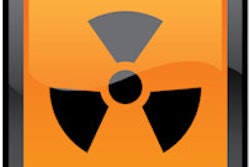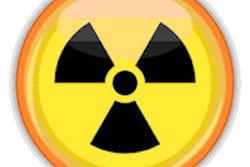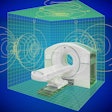
Faced with a doubling of CT volume in their healthcare system over the past five years, researchers from Dubai Hospital used a program of continuous monitoring and action to substantially reduce radiation dose to adult and pediatric patients undergoing common CT exams.
The effort was part of an International Atomic Energy Agency (IAEA) technical project titled Strengthening Radiation Protection in Medicine.
The researchers described their experiences in monitoring, optimizing, and comparing diagnostic reference levels of radiation dose indexes at the hospital over approximately four years in a paper in the American Journal of Roentgenology (October 2013, Vol. 201:4, pp. 858-864).
Lack of long-term data
In explaining their research, the study authors noted that there are few publications that give information about dose-monitoring experience on a long-term basis.
"This is the first study done on a period of years," said study author Jamila AlSuwaidi, PhD, from the department of medical education, Dubai Health Authority, United Arab Emirates, in an interview with AuntMinnie.com. "The previous ones were to compare different systems at different places."
During the past five years, the number of CT studies has doubled at Dubai Health Authority hospitals, and this situation -- along with patient overdoses and clinical radiation injuries reported internationally in recent years -- prompted the Dubai Health Authority to adopt a systematic approach in recording, observing, and controlling CT dose, according to the study authors.
The researchers monitored patient dose delivered by a four-slice MDCT scanner (LightSpeed, GE Healthcare) located at Dubai Hospital. CT machine output, in terms of weighted CT dose index (CTDIw), was monitored using head and body phantoms accredited by the American College of Radiology.
Dose-length product (DLP) and CT dose index volume (CTDIvol), along with patient and imaging parameters, were manually recorded during 2008 for head, chest, abdomen, and pelvis scans. From 2009 to 2011, these dose and imaging parameters were recorded within the hospital's RIS and PACS.
Steps to reduce radiation dose were taken and image quality was monitored. The effects were monitored through change in average DLP on a monthly basis and with respect to third-quartile values, which are used to indicate abnormally high doses on a local, national, or regional scale. Sites in the third quartile represent the 75% of hospitals/x-ray rooms that are giving patients doses below the reference value.
DLP values were compared with diagnostic reference levels (DRLs) available from a number of European countries and DRLs of the Dubai Health Authority, which were adapted based on European results.
Patient doses were managed through automatic tube current modulation, pediatric low-dose protocols, increasing the noise index while maintaining image quality, lowering kV for children in particular, adjusting gantry rotation speed on certain examinations, reducing scan length to the minimum needed to obtain the required clinical information, and improving awareness of the acceptability of images with some noise.
In the study, 8,780 adult and 541 pediatric patients underwent CT exams. Compared with dose indexes in 2008, adult doses in 2010 were reduced by approximately 52%, 16.4%, and 34.8% for head, chest, and abdomen and pelvis examinations, respectively.
For the pediatric group, dose indexes were reduced by approximately 45.2%, 39.6%, and 43.3% for head, chest, and abdomen and pelvis examinations, respectively.
The CT DLP levels were comparable to those reported by European countries. For adults, abdomen and pelvis third-quartile CT dose indexes were slightly higher; however, the values were lower than those of the European countries for chest and head examinations. For the pediatric patients, the dose indexes were, in general, lower than those reported by the European regions, with a slight increase for the abdomen and pelvis.
The study successfully demonstrates significant CT dose reduction with acceptable image quality, wrote the study authors.
"Establishment of strategies for CT radiation dose optimization represents an essential step to be incorporated within hospital quality development programs," they added. "This article shows that continuous CT dose index monitoring is an important component of such CT radiation dose optimization strategies."
The results also indicate the need to introduce local diagnostic reference levels to substitute for the adapted ones, the authors noted.
"The diagnostic reference levels that we used at our hospital were based on [those of the] U.K. and [European Community], i.e., we adopted a level closer to their levels," explained AlSuwaidi. "To implement the diagnostic reference levels on a local level, we need to carry out a survey on CT patient dosimetry at all our CT facilities at our area in Dubai."
The most enlightening finding remains the significant reduction in patient doses for both adult and pediatric patients, AlSuwaidi added.
"We expected a reduction but not to this extent," she said.
She noted that it's important to monitor CT patient doses because repeated CT scans have the risk -- albeit small -- of inducing cancer, particularly in younger patients.
"Working as a team of radiologists, radiographers, and medical physicists, a reduction in CT doses can be achieved without sacrificing clinical information obtained from CT examinations," she concluded. "Reduction of radiation doses can only be manifested once it is carried out over a period of time such as three to five years."



















